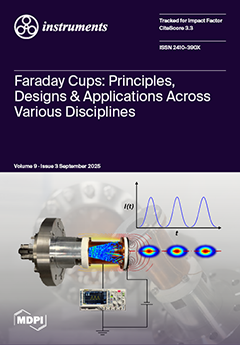Open AccessArticle
An Experimental Setup to Study Electron Transport and Thermalization in Cryogenic Para-Hydrogen Crystal Matrices
by
Piergiorgio Antonini, Massimo Benettoni, Armando F. Borghesani, Caterina Braggio, Roberto Calabrese, Giovanni Carugno, Federico Chiossi, Ugo Gasparini, Franco Gonella, Marco Guarise, Alen Khanbekyan, Alessandro Lippi, Augusto Lombardi, Emilio Mariotti, Madiha M. Makhdoom, Giuseppe Messineo, Jacopo Pazzini, Giuseppe Ruoso, Luca Tomassetti and Marco Zanetti
Viewed by 983
Abstract
We present an experimental apparatus to investigate electron transport and thermalization in cryogenic para-hydrogen crystal matrices. This paper describes the techniques used to grow and characterize the cryogenic para-hydrogen crystals, the optical system employed to photoextract electrons, and the charge collection system used
[...] Read more.
We present an experimental apparatus to investigate electron transport and thermalization in cryogenic para-hydrogen crystal matrices. This paper describes the techniques used to grow and characterize the cryogenic para-hydrogen crystals, the optical system employed to photoextract electrons, and the charge collection system used to study the behavior of electrons within the solid matrix. By probing the fundamental charge transport and energy loss processes in a quantum solid, such as para-hydrogen, this study paves the way for future precision experiments that leverage the unique properties of cryogenic crystal matrices.
Full article
►▼
Show Figures





